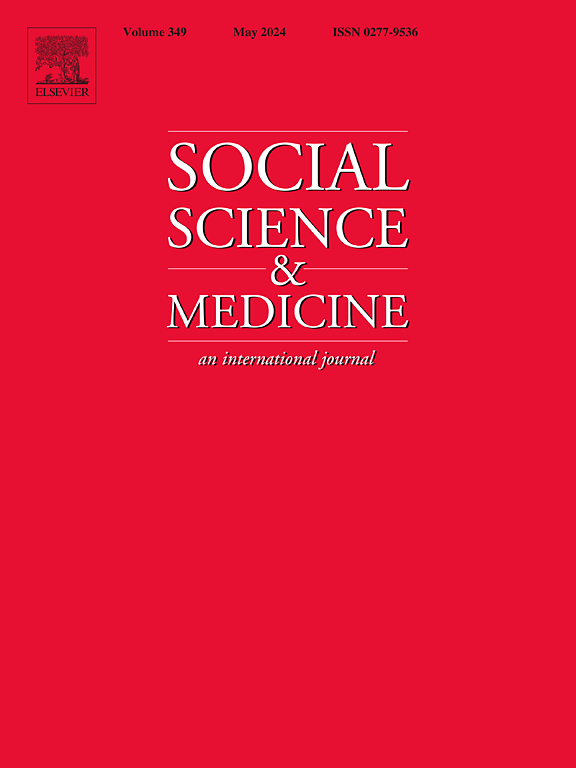Marital choice, spousal communication, and contraceptive self-efficacy and use among newly married girls in India: Evidence from the UDAYA study
IF 4.9
2区 医学
Q1 PUBLIC, ENVIRONMENTAL & OCCUPATIONAL HEALTH
引用次数: 0
Abstract
Background
Marital choice of girls in India is low, with most marriages arranged entirely by parents and extended family members. Evidence on the relationship between marital choice and reproductive autonomy remains limited in India. This study sought to fill this critical gap by examining the association between marital choice, spousal communication, and contraceptive self-efficacy and use.
Methods
Data were analysed from the Understanding the Lives of Adolescents and Young Adults (UDAYA) survey, conducted in two north Indian states─ Uttar Pradesh and Bihar across rural and urban settings. Our analytic sample for analysis included 5,018 currently married adolescent and young adult girls aged 18–22 years at wave 2, 2018-19. We employed descriptive statistics, a chi-square test, and unadjusted and adjusted binary logistic regression models.
Results
Overall, 41.1% of girls had contraceptive self-efficacy and 17.5% used contraceptives. Girls’ involvement in spouse selection, either solely or jointly with parents –particularly when girls knew their husbands before marriage – was positively associated with spousal communication about fertility and contraception compared to those in parent-arranged marriages. Girls in self-choice marriages were linked to higher contraceptive self-efficacy (AOR: 1.56; 95 % CI: 1.24, 1.97) and increased contraceptive use (AOR: 1.68; 95 % CI: 1.25, 2.26) than parent-arranged marriages. Girls who knew their husbands before marriage in joint decision-making also showed higher odds of contraceptive use (AOR: 1.49; 95 % CI: 1.16, 1.92). However, the association between marital choice and contraceptive use was significant only in urban areas, not in rural areas.
Conclusion
Our study demonstrated that girls' involvement in spouse selection was associated with improved spousal communication, greater contraceptive self-efficacy, and increased contraceptive use, with significant contextual differences. Findings emphasized the critical role of girls’ agency in marital decisions and effective spousal communication in increasing contraceptive use tailored to specific contexts among newly married girls in India.
求助全文
约1分钟内获得全文
求助全文
来源期刊

Social Science & Medicine
PUBLIC, ENVIRONMENTAL & OCCUPATIONAL HEALTH-
CiteScore
9.10
自引率
5.60%
发文量
762
审稿时长
38 days
期刊介绍:
Social Science & Medicine provides an international and interdisciplinary forum for the dissemination of social science research on health. We publish original research articles (both empirical and theoretical), reviews, position papers and commentaries on health issues, to inform current research, policy and practice in all areas of common interest to social scientists, health practitioners, and policy makers. The journal publishes material relevant to any aspect of health from a wide range of social science disciplines (anthropology, economics, epidemiology, geography, policy, psychology, and sociology), and material relevant to the social sciences from any of the professions concerned with physical and mental health, health care, clinical practice, and health policy and organization. We encourage material which is of general interest to an international readership.
 求助内容:
求助内容: 应助结果提醒方式:
应助结果提醒方式:


